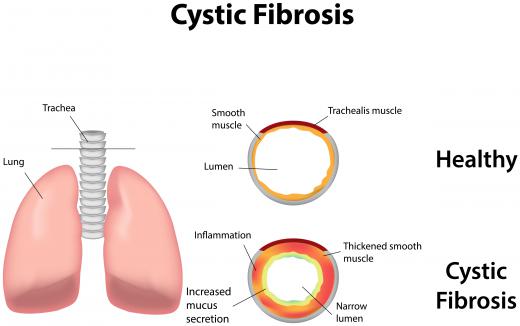What is Iontophoresis?
Iontophoresis is a medical procedure in which a mild electrical current is applied to the skin. This electrical current serves to temporarily increase the permeability of the skin, allowing medication to pass through what would normally be a barrier. This process is used as a method of drug delivery and to test for cystic fibrosis.
The basis of many types of iontophoresis treatment is the fact that when a mild electric current is applied to the skin, it becomes more permeable. This means that pores such as sweat glands and hair follicles are more receptive to the uptake of chemicals. Many physical therapists use the procedure for this reason. When used in this way, anti-inflammatory medication can be delivered across the skin, allowing the physical therapist to more directly target an area of the body which needs treating. A heel condition called plantar faciitis, and an inflammatory disease called bursitis can both be treated using this method of drug delivery.

A nervous system condition called hyperhidrosis can also be treated with iontophoresis. Hyperhidrosis causes increased sweating, particularly from the hands and feet. This condition develops because the body’s sympathetic nervous system cannot properly control the body’s temperature, particularly in extremities. As a result, the hands and feet, and other locations such as chest, armpits, and back, sweat excessively.

Iontophoresis can help treat this problem; however, the exact way in which this treatment helps reduce the symptoms of hyperhidrosis is unknown. The prevailing theory is that the electrical stimulation serves to thicken the skin’s outer layer, reducing the flow of sweat to the surface of the skin. This treatment is generally used only for hyperhidrosis of the palms of the hands of soles of the feet. During the procedure, a patient must sit with their hands or feet immersed in a shallow water bath, while a mild electric current is passed through the water. This treatment can be repeated bi-weekly until sweating is reduced.

Another use for the procedure is as a diagnostic test for cystic fibrosis. This hereditary disease causes excess production of mucus, and significantly shortens the patient's lifespan. The easiest diagnostic marker to measure is sweat chloride level, as people with cystic fibrosis have a greatly increased level of chloride in their sweat. During the test, a sweat-inducing chemical is applied to the skin; following this, iontophoresis is carried out to help stimulate the sweat glands. The sweat is collected on filter paper and analyzed for the presence of chloride.

People who wear pacemakers, have a heart condition, or have epilepsy, should not use this treatment. In addition, it may be unsafe for pregnant women. Apart from the increased risk for these groups of people, iontophoresis side effects are minimal. The treatment can be drying for the skin; moisturizers are recommended after treatments to reduce dryness. Abrasions on the area of skin to receive the treatment should be covered with petroleum jelly or a similar substance, before treatment begins, to prevent irritation.
AS FEATURED ON:
AS FEATURED ON:

















Discuss this Article
Post your comments